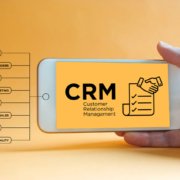Senior Living Marketing Budgets: 4 Key Steps
Budget season is here! As you develop your senior living marketing budget for 2024, make sure you’re asking the right questions and looking at the most relevant data.
Struggling with where to begin? This article will help.
Below, we discuss the following:
- The four main steps to developing a senior living marketing budget
- The biggest challenge marketers face when developing their budgets (and how to overcome it)
- Budget presentation tips
- What to do if you need help
The four main steps to developing your senior living marketing budget
Marketing isn’t a static exercise. So many things can affect what works and what doesn’t in any given year, many of which are beyond your control. (Pandemics, anyone?) As a result, marketers must be equal parts proactive and responsive, which isn’t easy.
This reality could leave even the most optimistic marketer or COO feeling hopeless when developing a marketing budget that makes sense.
The best way to do it is to let the data guide you.
But which “data” exactly?
We recommend following this four-step process:
- Consider your current budget for each channel (e.g., organic, paid, social, etc.). Remember, the best way to inform future strategy is through current performance.
- Review each channel’s results. And not just contacts and leads—you must know which channels are producing tours, deposits, and move-ins.
- Identify any gaps. What don’t you have in your marketing stack? For example, if you haven’t launched a new version of your website in three years, you probably need a new one or a significant refresh at the very least.
- From there, reallocate your budget accordingly. Put more dollars toward what’s delivering the most tours, deposits, and move-ins.
Four steps might sound too good to be true, but remember what marketing is all about. It’s supposed to bring in leads with the best probability of turning into sales. Or, in our industry jargon, senior living marketing should deliver the leads that have the best chance of turning into move-ins.
You use various marketing channels—and campaigns within those channels—to attract those leads. Some channels and campaigns inevitably work better than others (and this can and will change over time). Your job is to know what’s working best year-to-year and to put more of your marketing budget toward those channels and campaigns.
It’s not rocket science, but that doesn’t mean this four-step process doesn’t have challenges, which brings us to our next point.
The biggest challenge marketers face when developing a budget (and how to overcome it)
The most challenging part usually involves the collection and interpretation of data. You must have accurate data to make an informed decision.
The issue: Too often, a lack of bidirectional visibility exists between sales and marketing regarding data and analytics.
If your martech platform isn’t connected bilaterally to your senior living CRM, you’ll end up with two systems that are blind to each other. One system will house initial source attribution (and possibly prospect behavior before people convert, depending on how sophisticated your system is). But once the leads are handed over to the sales team, the marketing team will be out of the loop because all data collected moving forward will be housed within the CRM.
Suppose you’re struggling with these marketing vulnerabilities. In that case, the best thing you can do for yourself, your team, and your overall marketing efforts is to choose a CRM with a related marketing automation platform that’s capturing social, paid, organic, Google Analytics 4 (GA4), event registrations, and so forth. This centralized marketing portal should allow you to create custom dashboard reports that you can easily filter by location, portfolio, region, and investor group.
If you don’t have this ability and you’re simply rolling up everything into global numbers, you’ll lack the business intelligence to make informed decisions. You’ll also need to go to each channel individually and manually export data. For example, you’ll need to go into GA4 to get organic data. Then, you must go into your Google Ads account to get details about spend, clicks, conversion rates, and cost per lead. From there, you go into each social media platform—and so on and so on.
This can take a lot of time, depending on the number of channels you use, the number of campaigns you run in any given year, and the number of properties in your portfolio. You’re bound to miss critical data points somewhere along the way simply because there’s too much data for one person to reasonably monitor and manage on their own.
Another issue marketers can face is this: They might have a martech platform bilaterally connected to the CRM, but one or both systems haven’t been set up correctly. Hint: We can help you determine the systems and integrations you need. We can also help you set them up to capture the right data at the right time and produce dynamic custom dashboards with real-time insights.
Budget presentation tips
Keep it simple with PowerPoint. Create slides that walk stakeholders and decision-makers through the key points:
- This was last year’s budget.
- These are the channels we invested in.
- Here’s the number of contacts, tours, and move-ins each channel generated.
- Here’s the recommended budget for next year—and how we’ll allocate it. (You could break it down into what you’d do if you use the same budget numbers vs. what you’d do if you had more budget.)
Be prepared to justify your recommendations. The slides themselves can present the visuals.
Remember, at the end of the day, budget time is all about negotiations. If you go in with your must-haves vs. your nice-to-haves, you’ll know what you must fight for… and what you can walk away from if necessary.
Is budget season giving you a headache? Get in touch
If you want to discuss how to approach your senior living marketing budget, schedule a complimentary 30-minute session with our CEO, Debbie Howard. She’ll be happy to review your data and help interpret it.












